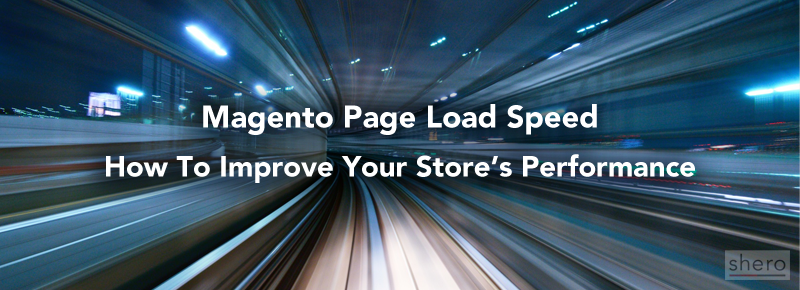A 1 second delay in page response can result in a 7% reduction in conversions. The speed of your business website matters. Fast-loading websites perform better on every front: higher search ranking, excellent user experience, and better user engagement. Most importantly, quick-loading websites deliver higher conversions and higher revenue.
What is an acceptable page load time? The faster, the better. SEO experts often quote the two second rule. 1 in 4 people will abandon a website if it takes more than four seconds to load. If one website is taking too long to deliver it, then they will find another one that can do it faster.
Page load time is becoming a more important factor when it comes to search engine rankings. Since 2010, Google has been consistent in their messaging about increasing importance of page speed in their algorithms. Other factors that creating ranking for SEO are relevance, topicality, reputation – all the factors that you probably think about all the time. There are over 200 different components Google looks for to rank a website so page load isn’t huge but still a factor in the ranking.
What can you do to speed up your Magento website?
-
- Decrease Image Size / Limit Embedded Media: Are your images sized properly for the website? Are there too many images on a page? You shouldn’t use images that are much larger than necessary. If your site requires a small image, such as 50 x 50, there is no need to upload a much larger file to get the same result. An image that is sized at 50 x 50 will look just as good as an image that is sized down from 500 x 500 to 50 x 50. Using HTML or CSS to size down your images causes unnecessary work for the browser, and can negatively impact load speed. When sizing images, remember that retina screens use higher pixel density, so if your site is responsive, you might need to size images larger or switch your icons for larger ones when mobile devices are used. Media like videos or slideshows slow down loading speed. Embedding a video directly from YouTube adds extra load time to your website.
One solution would be to load the player on-demand. Google Plus uses a workaround to reduce the time it takes to initially load the YouTube video player. Instead of embedding the full Youtube video player, Google Plus only displays the thumbnail of a YouTube video and then overlays a play icon over the video so the image resembles a video player. When the user hits the play button, the image thumbnail gets replaced with the standard video player. Thus, the extra player-specific resources are loaded only when the user has decided to play the embedded video and not otherwise. View More Details Here
- Catalog Size: The larger your catalog, the greater the burden on your server(s) to load pages, especially when we’re talking about SKUs tipping over 100K. You can enable Flat Categories and Products to improve load speed. All the product and category information is saved in the database. The database consists of a bunch of tables, like excel sheets. There are lots of tables, and even more rows in each table. So when Magento has to search multiple tables for information that’s spread out, it can bottleneck and become slow. Enabling Use Flat Catalog Category and Use Flat Catalog Product will take the information that’s spread out and flatten it into one table (or relatively less tables) usually reducing the response time.
- Decrease Image Size / Limit Embedded Media: Are your images sized properly for the website? Are there too many images on a page? You shouldn’t use images that are much larger than necessary. If your site requires a small image, such as 50 x 50, there is no need to upload a much larger file to get the same result. An image that is sized at 50 x 50 will look just as good as an image that is sized down from 500 x 500 to 50 x 50. Using HTML or CSS to size down your images causes unnecessary work for the browser, and can negatively impact load speed. When sizing images, remember that retina screens use higher pixel density, so if your site is responsive, you might need to size images larger or switch your icons for larger ones when mobile devices are used. Media like videos or slideshows slow down loading speed. Embedding a video directly from YouTube adds extra load time to your website.
- Enable Cache: Caching improves load speed response time on your Magento Store. A cached page will be stored after one visit or pre-generated and stored. A cached page takes much less time to open in a browser. Fast load speed is crucial to your customers’ shopping experience, and customers will commonly abandon stores that are slow to load or respond.Magento Enterprise Edition offers full page caching as a default option for category, product, and CMS pages.
- Minify CSS, JavaScript, and HTML: Minifying removes all unnecessary characters from source code without changing its functionality. These unnecessary characters usually include white space characters, new line characters, and comments, which are used to add readability to the code but are not required for it to execute. *This may be something your front-end developer will need to help with.
- Check Links: A broken link is a hyperlink to a webpage that doesn’t exist. Because an attempt to access such a page still requires an HTTP request (at best), basically, it’s a waste of your page’s load time.
- Remove Social Media Buttons: Do you have Facebook, Twitter, Google+ and LinkedIn sharing buttons on your pages? That’s 580Kb of content you’re serving to frustrated end users. Much of it is JavaScript that must be executed by the browser and some networks stipulate it must be loaded before your content appears.Bloated social widgets are completely unnecessary — you can add social buttons to your pages with a few lines of HTML.
Addthis: Addthis allows simple activation which includes only one line of code, the user can track metrics to see how the tools are performing as well as what is trending or popular on the website, it is mobile friendly, has increased SEO, and most importantly, faster load time.
Sharethis: Sharethis has analytics built in so the user can view sharing statistics and other relevant data. The multi-post option enables visitors to share content without leaving your website. - Keep CMS Updated: It is recommended to always upgrade your content management system (CMS), your plugins, and other software your website depends on (to the latest version). This will keep the software you use bug-free and will let you receive new features that could improve your website’s speed and performance.
Interesting Facts –
73% of mobile internet users say that they’ve encountered a website that was too slow to load.
51% of mobile internet users say that they’ve encountered a website that crashed, froze, or received an error.
38% of mobile internet users say that they’ve encountered a website that wasn’t available.
47% of consumers expect a web page to load in 2 seconds or less.
40% of people abandon a website that takes more than 3 seconds to load.
A 1 second delay in page response can result in a 7% reduction in conversions.
If an e-Commerce website is making $100,000 per day, a 1 second page delay could potentially cost you $2.5 million in lost sales every year.
Roughly 45% of top 100 e-commerce sites on the web don’t bother to compress their images.
An astounding 75% of all Internet users asserted that they wouldn’t revisit a website that doesn’t load within 4 seconds.
Support Operations Manager





